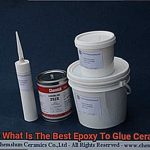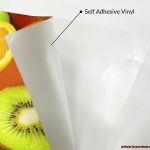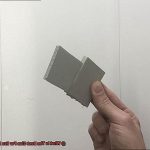When it comes to tongue and groove applications, finding the perfect adhesive is key for a flawless and long-lasting finish.
You want an adhesive that can handle the intricate interlocking profile of tongue and groove boards, providing the strength and durability needed to hold them together securely. But with so many adhesives out there, how do you know which one is best for your project?
Don’t worry, we’ve got you covered. In this blog post, we’ve done all the research for you and put together everything you need to know.
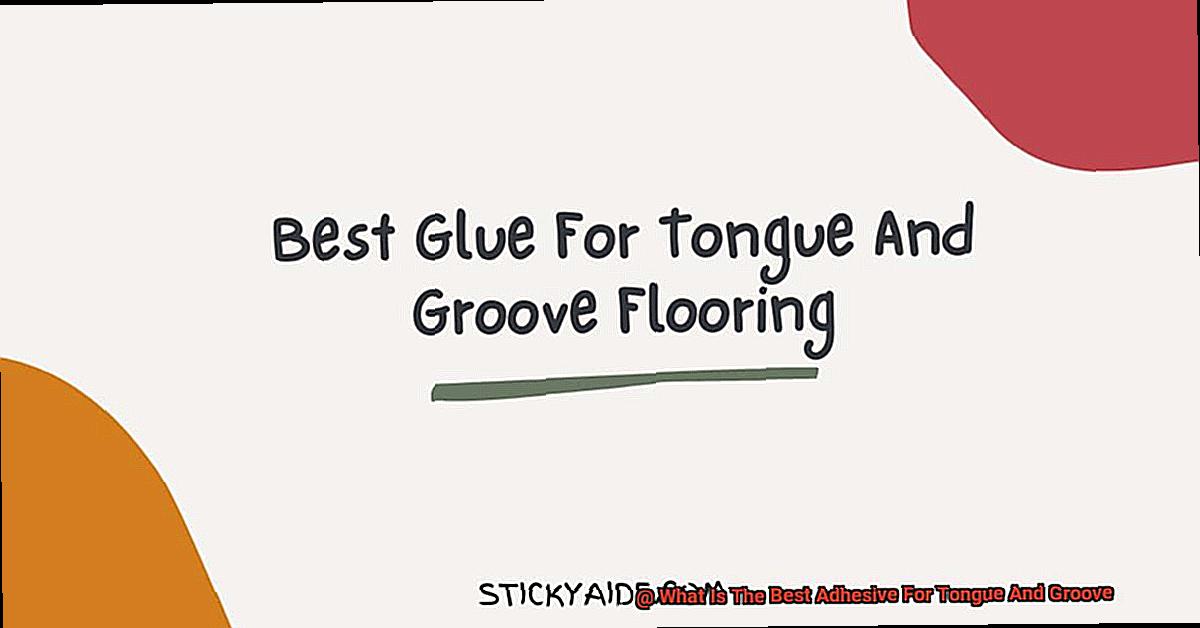
We’ll explore all the options and reveal the ultimate adhesive for tongue and groove applications. Whether you’re installing hardwood flooring, paneling, or building furniture, this comprehensive guide will help you make an informed decision so you can achieve professional results every time.
So let’s dive in.
What is Tongue and Groove?
Contents
- 1 What is Tongue and Groove?
- 2 Benefits of Using Adhesives for Tongue and Groove
- 3 Types of Adhesives Suitable for Tongue and Groove
- 4 Polyurethane Adhesive
- 5 Epoxy Resin
- 6 Solvent-Based Construction Adhesives
- 7 Specialized Adhesives for Tongue and Groove
- 8 Factors to Consider When Selecting an Adhesive for Tongue and Groove
- 9 Conclusion
In the realm of woodworking, few techniques have stood the test of time like the venerable tongue and groove joint. This method of joining wood pieces together has captivated enthusiasts and professionals alike with its strength, stability, and undeniable aesthetic appeal. In this comprehensive exploration, we will delve into the intricate world of tongue and groove, uncovering its benefits, applications, and even the optimal adhesives for this remarkable joint.
Benefits of Tongue and Groove:
- Seamless Aesthetics: The snug fit achieved by tongue and groove joints creates a flush surface devoid of any visible gaps or spaces. This meticulous craftsmanship enhances the overall appearance of finished products, be it exquisite flooring, elegant paneling, or refined cabinetry.
- Enhanced Durability: The tight interlocking design of tongue and groove joints prevents boards from shifting or separating. This results in a robust and stable structure capable of withstanding the rigors of daily wear and tear.
- Whispering Silence: When employed in flooring or wall paneling, tongue and groove joints minimize the irksome creaks or squeaks that can plague other types of joints. Imbuing spaces with tranquility, this joint fosters a more serene and enjoyable living or working environment.
Applications of Tongue and Groove:
- Flooring: Tongue and groove flooring has earned its place as a preeminent choice due to its durability, hassle-free installation, and captivating allure. Whether it’s the timeless elegance of hardwood, the versatility of engineered wood, or the affordability of laminate flooring, tongue and groove joints ensure a secure fit capable of enduring heavy foot traffic.
- Paneling: Elevating walls and ceilings to new heights of charm and character, tongue and groove paneling finds favor in both residential and commercial spaces. This timeless technique allows for endless customization, with various wood species and finishes lending their unique personality to any environment.
- Cabinetry: The world of cabinetry owes much of its longevity to the enduring strength of tongue and groove construction. This method is frequently employed to create joints capable of withstanding the weight of heavy items. It ensures the longevity of cabinets and drawers, even under the strain of daily use.
Choosing the Right Adhesive:
When it comes to selecting an adhesive for tongue and groove joints, a myriad of options awaits. Polyurethane adhesives, epoxy resins, solvent-based construction adhesives, and specialized tongue and groove adhesives all offer unique advantages. The choice ultimately depends on factors such as the materials being joined, environmental conditions, and desired bond strength. Following manufacturer instructions diligently and ensuring proper surface preparation are crucial for achieving optimal results.
Benefits of Using Adhesives for Tongue and Groove
When it comes to tongue and groove flooring, using adhesives offers a myriad of benefits that enhance both the installation process and the final result. Let’s delve into the advantages of using adhesives for tongue and groove and discover why they are a popular choice among homeowners and professionals alike.
First and foremost, adhesives provide a strong and secure bond between the tongue and groove joints. This ensures stability, preventing any movement or shifting of the planks over time. Say goodbye to annoying creaks or unsightly gaps between the boards – adhesive application creates a seamless and flush surface that not only looks great but also feels solid underfoot.
One of the standout advantages of using adhesives is the absence of visible nails or screws. This results in a cleaner and more aesthetically pleasing finish, allowing the natural beauty of the wood to take center stage without any distracting hardware. Moreover, the adhesive fills any gaps or unevenness between the planks, further enhancing the overall appearance.
But it’s not just about looks – adhesives also improve the structural integrity of the tongue and groove installation. By creating a strong bond, they make the flooring more resistant to warping, buckling, or separating over time. This added durability ensures that your investment will stand up to heavy foot traffic and daily wear and tear.
In addition to strength and durability, adhesive bonding offers practical benefits as well. It provides moisture resistance, helping prevent water damage or swelling of the planks. This makes it an excellent choice for areas prone to spills or high humidity. Furthermore, adhesives can improve the acoustics of a room by reducing sound transmission through the floor, creating a peaceful environment.
Another advantage of using adhesives is their convenience and time efficiency. Unlike other installation methods that require additional tools or equipment, adhesive application is straightforward and requires no special expertise. It’s a cost-effective solution too since it eliminates the need for expensive mechanical fasteners.
Adhesives also offer flexibility in installation. They can be used on various subfloor materials such as concrete, plywood, or even existing flooring surfaces. This versatility makes them suitable for a wide range of projects, whether you’re renovating your home or installing new flooring in a commercial space.
Types of Adhesives Suitable for Tongue and Groove
The art of tongue and groove joinery is a fundamental technique in woodworking, flooring, and paneling projects. To achieve a strong and durable bond, selecting the appropriate adhesive is crucial. This article will explore various types of adhesives suitable for tongue and groove applications, considering factors such as drying time, flexibility, compatibility with different wood species, and more.
Carpenter’s Glue (PVA):
Known as PVA glue in the woodworking community, carpenter’s glue is a popular adhesive for tongue and groove projects. It is water-based and offers excellent bonding properties. This adhesive is well-suited for indoor use and works effectively with most wood species. With its relatively fast drying time, carpenter’s glue allows for efficient progress on projects. Additionally, it provides good flexibility, accommodating the natural movement of the wood.
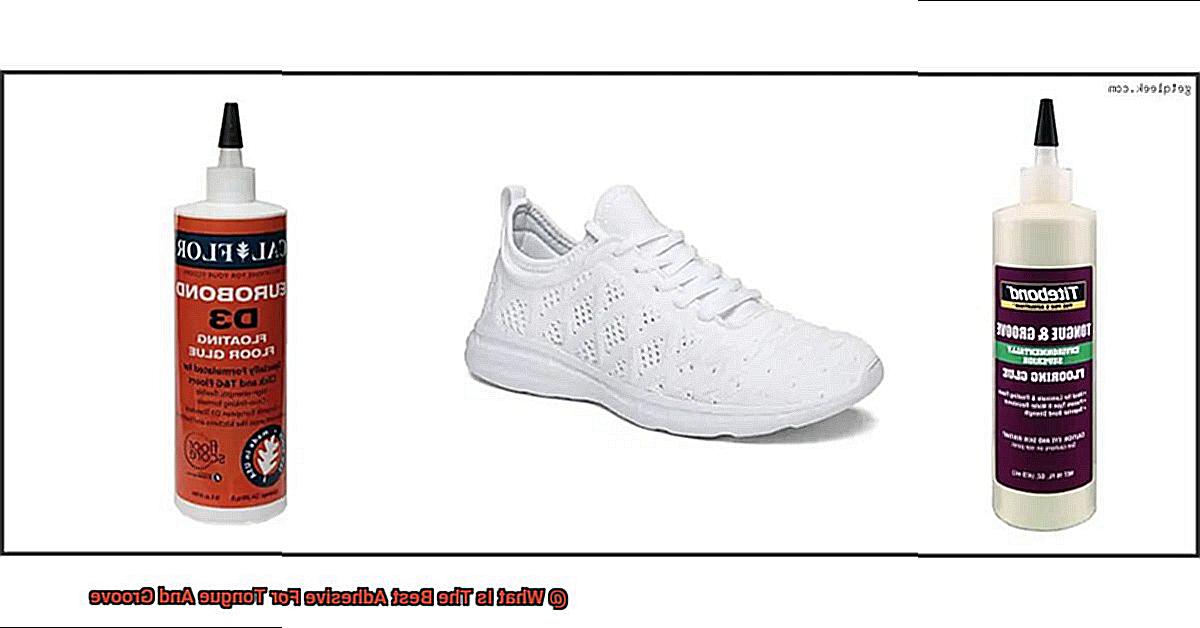
Polyurethane Adhesive:
Polyurethane adhesive is renowned for its exceptional bond strength and versatility. It reacts with moisture in the air or within the wood, creating a robust bond. This moisture-curing property makes polyurethane adhesive suitable for both indoor and outdoor applications. Moreover, it exhibits resistance to temperature changes and moisture, ensuring durability in tongue and groove joints subjected to varying conditions.
Epoxy Adhesive:
For those seeking unparalleled bonding strength and durability, epoxy adhesives are an excellent choice. Comprising a resin and a hardener that must be mixed before use, epoxy adhesives create a chemical reaction that results in a formidable bond. They exhibit exceptional resistance to moisture, heat, and chemicals, making them ideal for heavy-duty applications or areas with high moisture content. However, it is important to note that epoxy adhesives typically require a longer drying time.
PVC Adhesive:
When working with PVC materials for tongue and groove applications, it is vital to use a PVC adhesive specifically formulated for this purpose. PVC adhesives are solvent-based and deliver a robust bond for PVC tongue and groove panels or trim. They boast a quick drying time and offer excellent flexibility, ensuring secure joints in PVC applications.
Nails or Staples:
In some instances, an adhesive may not be necessary for tongue and groove joints. For instance, in flooring installations, nails or staples can sufficiently secure the boards. However, incorporating an appropriate adhesive can enhance the overall strength and stability of the joint, particularly in high-traffic areas or where additional durability is required.
Polyurethane Adhesive
When it comes to joining tongue and groove joints, finding the perfect adhesive is paramount. Today, we’ll delve into the world of polyurethane adhesive—a versatile powerhouse that offers a multitude of benefits for your woodworking projects. With its robust bond strength, resilience against moisture and heat, and remarkable flexibility, polyurethane adhesive stands head and shoulders above the rest.
Formidable Bond Strength:
Polyurethane adhesive effortlessly forges an indomitable bond between surfaces, ensuring your tongue and groove joints remain steadfast for years to come. Regardless of the material—wood, metal, plastic, or concrete—this adhesive guarantees exceptional adhesion and unwavering durability.
Unyielding Flexibility:
Tongue and groove joints may endure movement or expansion caused by fluctuations in temperature and humidity. Thankfully, polyurethane adhesive boasts unparalleled flexibility, allowing the joints to adapt without succumbing to cracks or fractures over time. This added flexibility ensures your projects remain intact even in the face of challenging environments.
Imperviousness to Moisture and Heat:
Projects exposed to the elements or high humidity levels necessitate an adhesive that can withstand moisture. Enter polyurethane adhesive—a water-resistant sentinel that shields your tongue and groove joints from the ravages of water infiltration. Furthermore, it exhibits exceptional heat resistance, making it ideal for applications exposed to scorching temperatures.
Effortless Application:
Using polyurethane adhesive is a breeze. Its liquid form lends itself to easy application via brushes, rollers, or sprays. Moreover, it cures rapidly, enabling efficient assembly of your tongue and groove joints without excessive waiting times.
Epoxy Resin
Epoxy resin, a remarkable adhesive that will elevate your woodworking projects to new heights. This two-part adhesive is the secret weapon for creating tongue and groove joints that are not only visually stunning but also incredibly durable.
One of the standout features of epoxy resin is its exceptional bonding properties. When mixed in the correct ratio, the resin and hardener form a chemical reaction that creates a bond like no other. This bond is incredibly strong and long-lasting, ensuring that your tongue and groove joints remain secure for years to come. But that’s not all – epoxy resin also has the ability to fill gaps and voids, providing an even tighter bond between boards and eliminating any worries about weak spots in your project.
Another advantage of epoxy resin is its relatively long working time. Unlike some adhesives that dry in the blink of an eye, epoxy resin allows you to take your time in positioning and adjusting the tongue and groove boards before it fully cures. This flexibility ensures that you can achieve the perfect fit, resulting in seamless joints that will make your woodworking skills shine.
However, it’s important to note that working with epoxy resin can be a messy affair. The sticky consistency of the adhesive means that it can leave residue on surfaces if not handled carefully. To avoid any mishaps, be sure to don protective gloves and work in a well-ventilated area. This way, you can enjoy the benefits of epoxy resin without any unwanted messes.
Once cured, epoxy resin forms an unyielding bond that withstands moisture, heat, and chemicals. This makes it an ideal choice for tongue and groove joints that may be exposed to these elements. Whether it’s an outdoor deck or a kitchen countertop, epoxy resin will ensure that your woodwork remains strong and beautiful for years to come.
Solvent-Based Construction Adhesives
In the world of tongue and groove applications, the adhesive you choose can make or break the strength and durability of your project. When it comes to a reliable and robust bond, solvent-based construction adhesives reign supreme. In this comprehensive guide, we will delve into the world of solvent-based adhesives, exploring their versatility, fast curing time, moisture resistance, temperature fluctuation resistance, as well as their VOC content and suitability for different projects. By the end of this journey, you will be armed with all the knowledge you need to make an informed decision for your woodworking endeavors.
Pros:

Versatility:
Solvent-based construction adhesives are true chameleons in the adhesive world. They possess the remarkable ability to bond an extensive range of materials, including wood, laminate, engineered flooring, metal, concrete, and even certain plastics. Whatever your tongue and groove project entails, these adhesives have got you covered.
Fast Curing Time:
Time is of the essence in any construction project. Solvent-based adhesives offer a distinct advantage with their swift curing time. Once applied, they dry rapidly, turbocharging your installation process and minimizing downtime to keep your project on track.
Moisture Resistance:
Moisture can be a relentless enemy for any woodworking project. However, solvent-based adhesives fear no water. Their exceptional resistance to moisture ensures that your bond remains rock solid, even in high humidity environments or areas prone to water exposure. From interior to exterior applications, these adhesives stand tall against moisture-induced challenges.
Temperature Fluctuation Resistance:
Solvent-based adhesives possess an impressive resilience against temperature fluctuations. They can handle extreme heat or cold without compromising the integrity of your bond. So whether you’re tackling a scorching summer project or a freezing winter endeavor, these adhesives will keep your joints steadfast.
Cons:
VOC Content:
While solvent-based construction adhesives offer immense bonding power, they come with a trade-off. These adhesives contain volatile organic compounds (VOCs) which are released during application and curing. To ensure safety, it is crucial to use them in well-ventilated areas or wear appropriate personal protective equipment to minimize exposure.
Suitability for Specific Projects:
Solvent-based adhesives are versatile, but not every project is a match made in adhesive heaven. Some materials, such as certain flooring options or environmentally friendly projects, may require low VOC content or specific adhesive properties not provided by solvent-based options. It’s essential to carefully consider the requirements of your project before making a final adhesive choice.
Specialized Adhesives for Tongue and Groove
When you embark on a project involving tongue and groove boards, it’s crucial to have the right adhesive in your toolbox. Specialized adhesives for tongue and groove joints are specifically formulated to create a bond that can withstand the stresses and movements inherent in wood flooring, paneling, and other applications. Let’s explore the different types of adhesives available, weighing their advantages and disadvantages to help you make an informed decision.
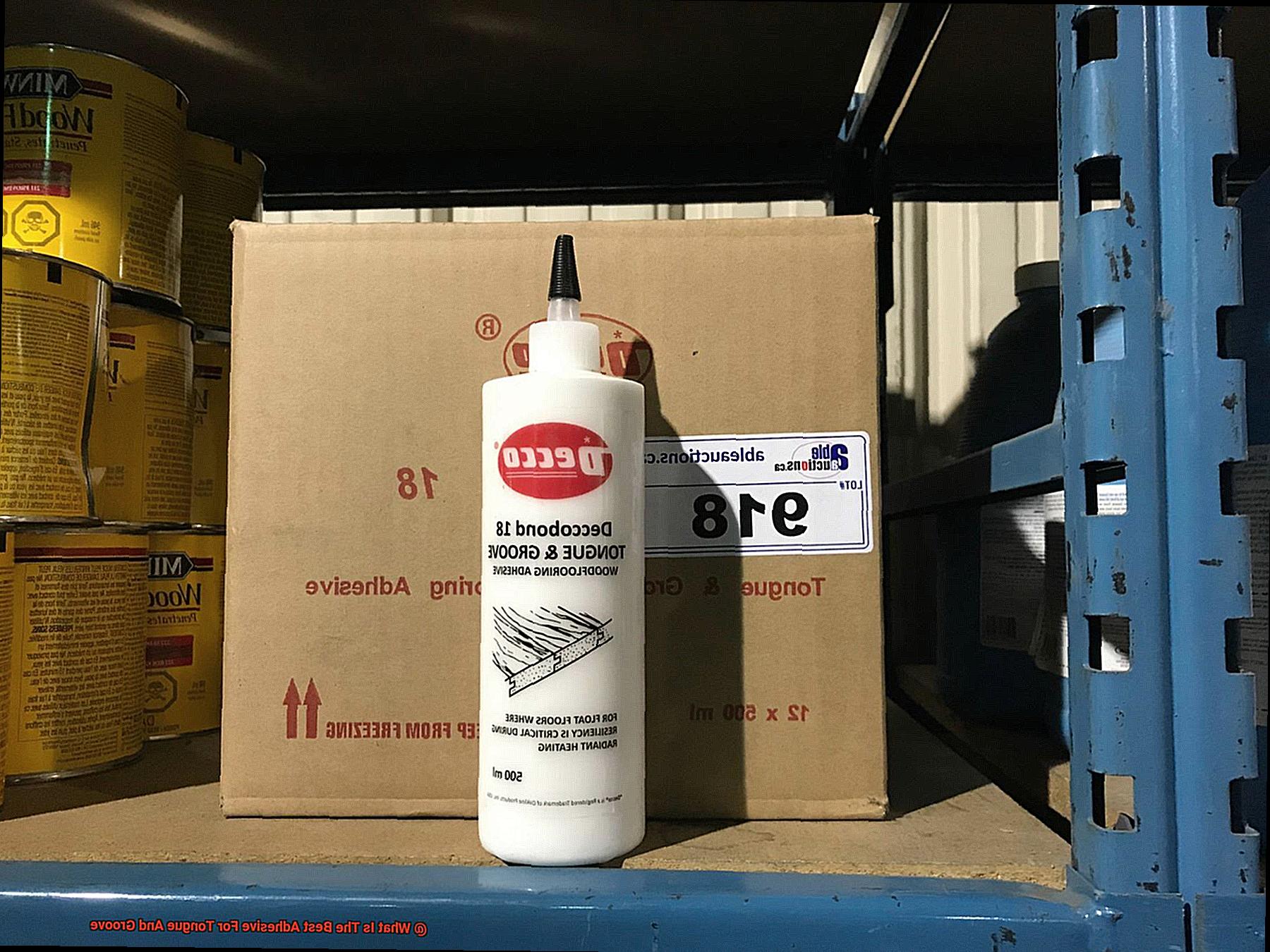
Polyurethane adhesive reigns as a popular choice for tongue and groove projects. This adhesive packs a powerful punch with its exceptional bonding strength and flexibility, making it an ideal match for this application. Moreover, polyurethane adhesives have a long open time, allowing you to easily adjust the boards before the adhesive fully sets. These adhesives also stand up well against moisture, ensuring reliable performance even in humid or water-exposed areas.
If speed is of the essence, look no further than PVA (polyvinyl acetate) glue. Known for its strong bond and quick drying time, PVA glues offer convenience and ease of use, making them a favorite among DIY enthusiasts. Nevertheless, bear in mind that PVA glues may lack the flexibility of polyurethane adhesives, rendering them less suitable for applications where joints experience significant movement or stress.
For projects demanding unparalleled strength, epoxy adhesives rise to the challenge. Boasting exceptional bonding strength and resistance to moisture, chemicals, and temperature fluctuations, epoxy adhesives are the go-to choice for high-stress tongue and groove joints. However, they do present some challenges due to their fast curing time and mixing requirements.
As you select an adhesive for your tongue and groove project, consider factors such as wood type, application requirements (indoor or outdoor), and anticipated joint stress levels. Consulting with a professional or adhering to manufacturer guidelines will ensure you choose the perfect adhesive for your specific undertaking.
Remember that proper preparation of the tongue and groove boards is essential to achieve a strong bond. Prioritize cleaning the surfaces, ensuring they are dry and free from contaminants or loose particles. Sanding or planing the edges may be necessary to guarantee a snug fit between the boards. When applying the adhesive, distribute it evenly and generously to prevent voids or gaps in the joint.
Factors to Consider When Selecting an Adhesive for Tongue and Groove
Whether you’re working on a simple DIY furniture project or tackling a heavy-duty construction task, selecting the right adhesive is crucial for the success of your project. With so many options available, it can be overwhelming to choose the perfect glue for your tongue and groove joints. But fear not. I’m here to share my expertise and guide you through the factors to consider when selecting an adhesive.
- Material Compatibility: Different adhesives are designed to bond specific materials, so make sure to choose one that is compatible with your wood or other material. This ensures a strong and lasting bond.
- Strength Requirements: Consider the strength requirements of your project. Are you assembling a delicate piece of furniture or constructing something that will bear heavy loads? Select an adhesive that can withstand the stress and load-bearing capacity needed for your specific application.
- Moisture Resistance: If your tongue and groove joints will be exposed to moisture, such as in flooring or outdoor structures, opt for an adhesive with good moisture resistance. This will prevent the joints from deteriorating over time due to moisture absorption.
- Setting Time: Think about the setting time of the adhesive. Do you need a fast-setting adhesive for quick assembly, or do you require more time for adjustments before it sets? Choose an adhesive that aligns with your project timeline and needs.
- Ease of Application: Consider the ease of application. Some adhesives come in convenient applicator bottles or cartridges, making the application process quick and mess-free. Others may require mixing or special tools, which can add complexity to the process.
- Environmental Considerations: Don’t forget about environmental considerations. Look for adhesives with low VOC content or eco-friendly formulations to ensure indoor air quality and adherence to environmental regulations.
le7IWg14Rao” >
Conclusion
Choosing the perfect adhesive for tongue and groove requires careful consideration of several crucial factors. Foremost among them is the need for a robust bond that withstands the test of time – no one wants their carefully crafted joints falling apart. Equally important is selecting an adhesive explicitly made for wood applications; this ensures compatibility and maximizes performance potential.
Another vital aspect to keep in mind is drying time – nobody wants to be left twiddling their thumbs while waiting ages for glue to set. Opting for an adhesive with rapid drying properties allows you to swiftly progress with your project without unnecessary delays.
Simplicity matters too. Look out for adhesives packaged conveniently in tubes or cartridges; these make dispensing and applying the product accurately a breeze.
Taking all these factors into account brings us to one standout solution: polyurethane-based construction adhesive. Its exceptional bonding strength, tailor-made for wood applications, ensures a reliable and durable connection between tongue and groove. What’s more, this adhesive dries quickly, allowing you to forge ahead with your project confidently.



